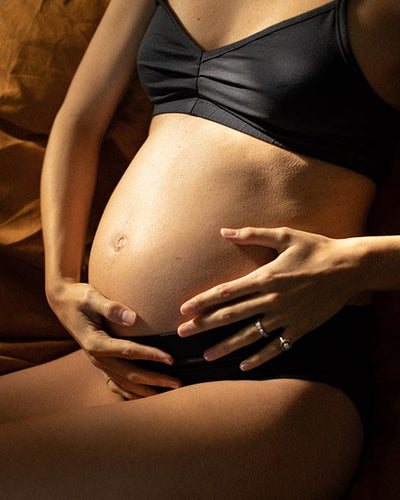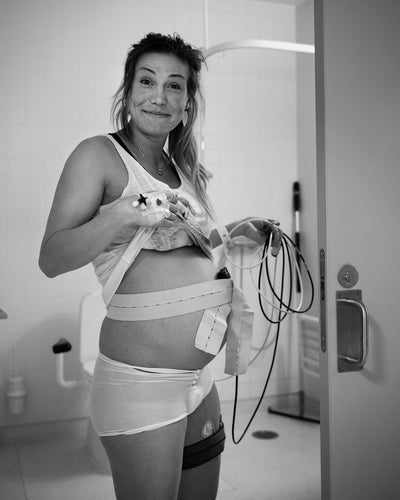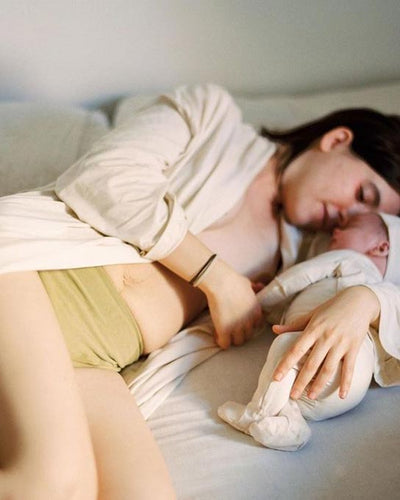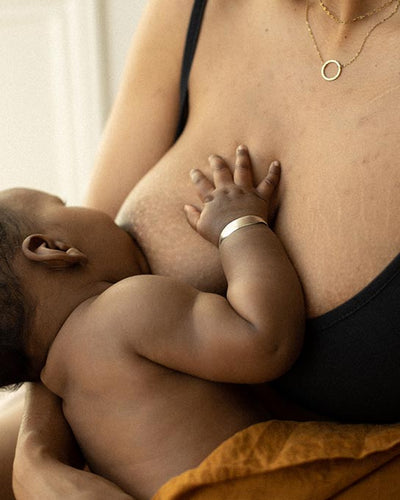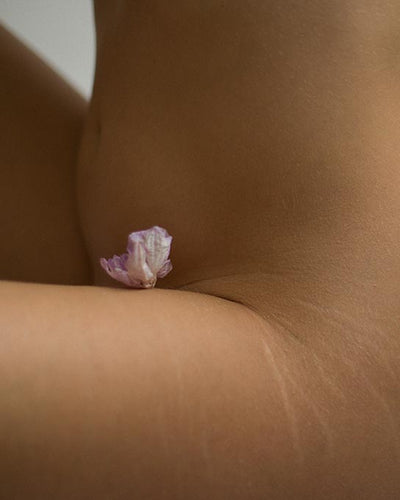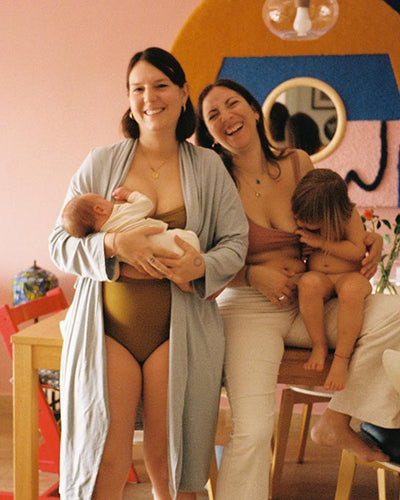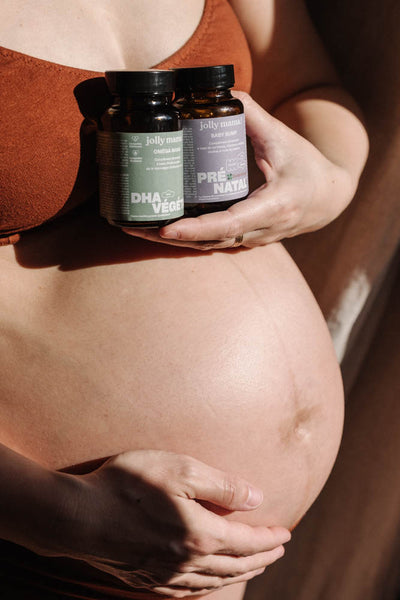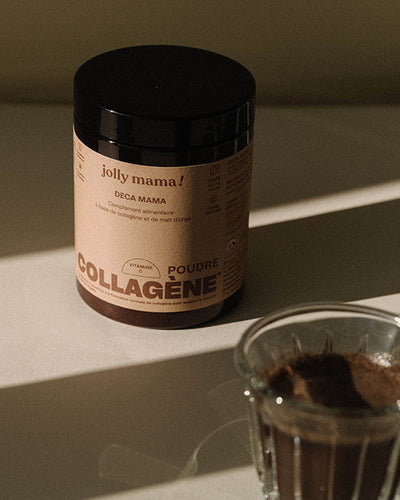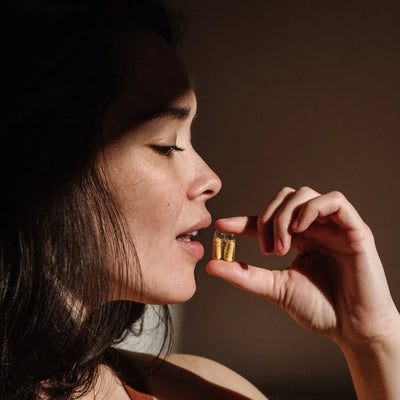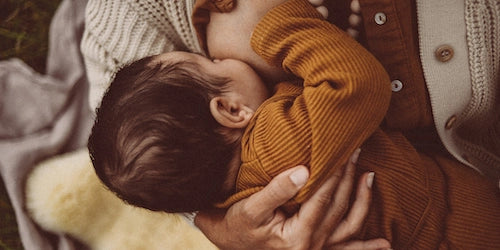Source 1 : The sleep-industrial complex, 2007 (New York Times)
Source 2 : Breast-feeding increases sleep duration of new parents, 2007
Source 3 : Troubled sleep: Night waking, breastfeeding and parent-offspring conflict, 2014
Source 4 : Sleep, Breastfeeding Abstracts, Children's Environments
Source 5 : The emergence of salivary cortisol circadian rhythm and its relationship to sleep activity in preterm infants, 2000
Source 6 : Development of fetal and neonatal sleep and circadian rhythms, 2003
Source 7 : Explorations fonctionnelles du système nerveux, CHU de Bicêtre, 1995
Source 8 : Developing circadian rhythmicity in infants, 2003
Source 9 : Melatonin rhythm in human milk, 1993 (Journal of Clinical Endocrinology & Metabolism)
Source 10 : Normal Infant Sleep: Night Nursing’s Importance (Psychology Today)
Source 11 : The impact of infant rooming-in on maternal sleep at night, 1988
Source 12 : Breastfeeding: physiological, endocrine and behavioural adaptations..., 1996
Source 13, 14, 15 : HAS, Allaitement maternel – Mise en œuvre et poursuite dans les 6 premiers mois de vie de l’enfant
Source 16 : The relationship between rooming-in/not rooming-in and breastfeeding variables, 1990
Source 17 : Infant colic: The effect of serotonin and melatonin circadian rhythms on the intestinal smooth muscle, 1992
Source 18 : Breastfeeding may improve nocturnal sleep and reduce infantile colic, 2012
Source 19 : Breastfeeding and reduced risk of sudden infant death syndrome: a meta-analysis, 2011
Source 20 : Relationship of sudden infant death syndrome to breastfeeding duration and intensity, 1993
Source 21 : Infant Feeding Guidelines, NHMRC, 2012
Source 22, 23 : Why babies should never sleep alone: a review of the co-sleeping controversy, 2005
Source 24 : AA 46 : Ainsi dorment les bébés, La Leche League France
Source 25 : Normal human sleep at different ages: Infants to adolescents, 2005
Source 26 : Development of sleep-wake patterns... during the first six months of life, 1982
Source 27, 28 : Night waking in early infancy: Part I, 1957
Source 29 : Night waking, sleep-wake organization, and self-soothing in the first year of life, 2001
Source 30 : What affects the age of first sleeping through the night?, 2004
Source 31 : Pennestri et al., op. cit.
Source 32 : Infant sleep disturbance, 2003
[2] Doan, T. et al. Breast-feeding increases sleep duration of new parents. The Journal of Perinatal & Neonatal Nursing 2007 July/September ; 21 (3) : 200-206. 10.1097/01.JPN.0000285809.36398.1b
[3] Haig D. Troubled sleep: Night waking, breastfeeding and parent-offspring conflict. Evol Med Public Health. 2014 Jan;2014(1):32-9. doi: 10.1093/emph/eou005. Epub 2014 Mar 7. PMID: 24610432; PMCID: PMC3982900. 10.1093/emph/eou005
[4] Early Human Development, Acta Paediatr, Sleep, Breastfeeding Abstracts, Children's Environments.
[5] Antonini, S. R., Jorge, S. M., Moreira, A. C., The emergence of salivary cortisol circadian rhythm and its relationship to sleep activity in preterm infants, Clinical Endocrinology, 52(4) (2000), pp. 423–6
[6] Mirmiran, M., Maas, Y. G., Ariagno, R. L., Development of fetal and neonatal sleep and circadian rhythms, Sleep Med Rev., 7(4) (2003), pp. 321-34 10.1053/smrv.2002.0243
[7] Dr Nedelcoux du Service d'explorations fonctionnelles du système nerveux au CHU de Bicêtre, 1995
[8] Rivkees SA, 2003. Developing circadian rhythmicity in infants. Pediatrics. 112(2):373-81
[9] Illnerova, H. Buresova M. and Presl, J. Melatonin rhythm in human milk. Journal of Clinical Endocrinology & Metabolism 1993 ; 77 : 838-841.
[10] Dr. Darcia Narvaez, Psychology Today, Normal Infant Sleep: Night Nursing’s Importance
[11] Keefe MR. The impact of infant rooming-in on maternal sleep at night. JOGNN 1988;122-6
[12] Uvnäs-Moberg K, Eriksson M. Breastfeeding: physiological, endocrine and behavioural adaptations caused by oxytocin and local neurogenic activity in the nipple and mammary gland. Acta Paediatr 1996;85(5):525-30. https://doi.org/10.1111/j.1651-2227.1996.tb14078.x
[13] HAS, Allaitement maternel
[14] HAS, Allaitement maternel – Mise en œuvre et poursuite dans les 6 premiers mois de vie de l’enfant
[15] HAS, Allaitement maternel – Mise en œuvre et poursuite dans les 6 premiers mois de vie de l’enfant
[16] Yamauchi Y, Yamanouchi I. The relationship between rooming-in/not rooming-in and breastfeeding variables. Acta Paediatr Scand 1990;79(11):1017-22 10.1111/j.1651-2227.1990.tb11377.x
[17] L.Weissbluth, M.Weissbluth 1992 Infant colic: The effect of serotonin and melatonin circadian rhythms on the intestinal smooth muscle. Medical Hypotheses Volume 39, Issue 2, Pages 164-167
[18] Cohen Engler A, Hadash A, Shehadeh N, Pillar G. 2012. Breastfeeding may improve nocturnal sleep and reduce infantile colic: potential role of breast milk melatonin. Eur J Pediatr. 171(4):729-32 10.1007/s00431-011-1659-3
[19] Hauck FR, Thompson JM, Tanabe KO, Moon RY, Vennemann MM. Breastfeeding and reduced risk of sudden infant death syndrome: a meta-analysis. Pediatrics. 2011 Jul;128(1):103-10. doi: 10.1542/peds.2010-3000. Epub 2011 Jun 13. PMID: 21669892. 10.1542/peds.2010-3000
[20] Fredrickson D, Sorenson J, Biddle A, Kotelchuck M. Relationship of sudden infant death syndrome to breastfeeding duration and intensity. American Journal of Diseases of Children 1993; 147: 460.
[21] National Health and Medical Research Council (2012) Infant Feeding Guidelines. Information for Health Workers. Sourced March 7th 2019
[22] McKenna, JJ and McDade, T. Why babies should never sleep alone : a review of the co-sleeping controversy in relation to SIDS, bed-sharing and breastfeeding. Paediatric Respiratory Reviews 2005 ; 6 :134-152. https://doi.org/10.1016/j.prrv.2005.03.006
[23] McKenna, JJ and McDade, T. Why babies should never sleep alone : a review of the co-sleeping controversy in relation to SIDS, bed-sharing and breastfeeding. Paediatric Respiratory Reviews 2005 ; 6 :134-152. https://doi.org/10.1016/j.prrv.2005.03.006
[24] La Leche League France, AA 46 : Ainsi dorment les bébés
[25] Jenni, Oskar G., and Mary A. Carskadon. “Normal human sleep at different ages: Infants to adolescents.” SRS basics of sleep guide (2005): 11-19.
[26] Coons, Susan, and Christian Guilleminault. “Development of sleep-wake patterns and non-rapid eye movement sleep stages during the first six months of life in normal infants.” Pediatrics 69, no. 6 (1982): 793-798.
[27] Moore, Terence, and L. E. Ucko. “Night waking in early infancy: Part I.” Archives of disease in childhood 32, no. 164 (1957): 333. 10.1136/adc.32.164.333
[28] Moore, Terence, and L. E. Ucko. “Night waking in early infancy: Part I.” Archives of disease in childhood 32, no. 164 (1957): 333. 10.1136/adc.32.164.333
[29] Goodlin-Jones, Beth L., Melissa M. Burnham, Erika E. Gaylor, and Thomas F. Anders. “Night waking, sleep-wake organization, and self-soothing in the first year of life.” Journal of developmental and behavioral pediatrics: JDBP 22, no. 4 (2001): 226. 10.1097/00004703-200108000-00003
[30] Adams, S. M., D. R. Jones, A. Esmail, and E. A. Mitchell. “What affects the age of first sleeping through the night?” Journal of paediatrics and child health 40, no. 3 (2004): 96-101. 10.1111/j.1440-1754.2004.00317.x
[31] Pennestri, et al., op cit. [34] France, Karyn G., Neville M. Blampied, and Jacqueline MT Henderson. “Infant sleep disturbance.” Current Paediatrics 13, no. 3 (2003): 241-246. https://doi.org/10.1016/S0957-5839(03)00004-6

